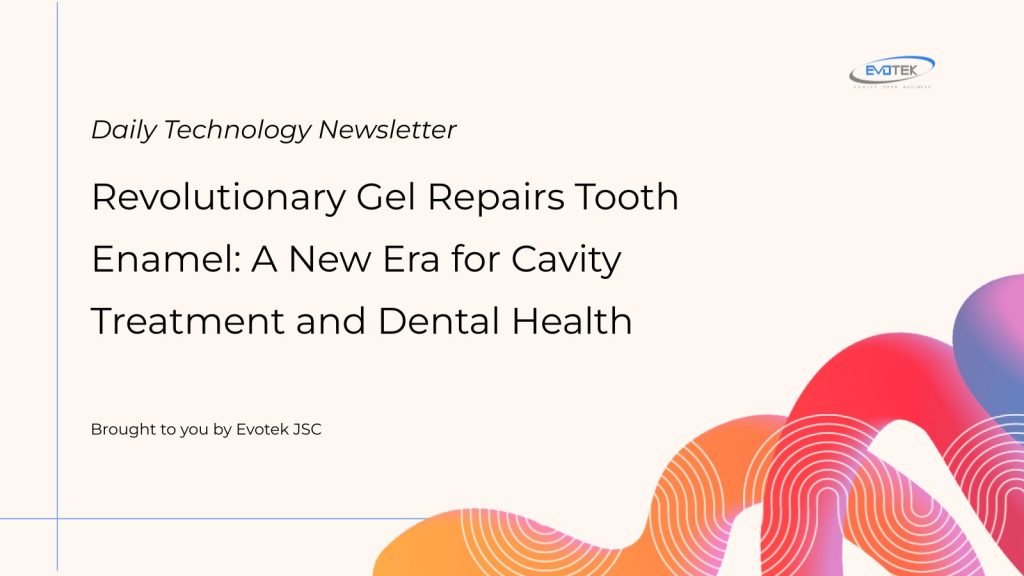A groundbreaking innovation from the University of Nottingham could soon transform dental care, offering a novel solution to combat cavities and tooth sensitivity. Scientists have engineered a unique protein-based gel that effectively mimics the body’s intrinsic ability to grow tooth enamel, paving the way for unprecedented dental repair and restoration.
This newly developed material represents a significant step forward in both preventive and restorative dentistry. Researchers from the University of Nottingham’s School of Pharmacy and Department of Chemical and Environmental Engineering designed this bioinspired substance not only to restore damaged or eroded enamel but also to reinforce existing enamel and provide a robust defense against future decay. Their remarkable findings were recently published in the journal Nature Communications.
The Science Behind Enamel Regeneration
Unlike conventional fluoride treatments, this innovative protein-based gel contains no fluoride. Its application method is straightforward, mirroring the techniques dentists already use for traditional treatments. The gel’s core mechanism lies in its ability to imitate the natural proteins that guide enamel formation during early life. Once applied, it forms a thin yet durable coating that permeates the tooth surface, meticulously filling in microscopic cracks and imperfections.
Serving as a sophisticated structural framework, the gel actively attracts calcium and phosphate ions present in saliva. This process encourages the precise, organized growth of new minerals through a phenomenon known as epitaxial mineralization. The result is a seamless integration of the new material with the natural tooth structure, effectively restoring both its integrity and inherent strength. This groundbreaking approach promises true tooth enamel regeneration, a long-sought goal in dental science.
Broader Applications and Impact on Global Dental Health
The versatility of this novel material extends beyond mere enamel repair. It can also be applied directly onto exposed dentine, facilitating the growth of an enamel-like layer. This particular application holds immense benefits, including the potential to effectively treat dental hypersensitivity and significantly enhance the bonding of dental restorations.
Enamel degradation is a pervasive global health issue, contributing significantly to tooth decay and affecting nearly half of the world’s population. Such problems often lead to infections, tooth loss, and can even be linked to broader systemic conditions like diabetes and cardiovascular disease. Crucially, natural tooth enamel does not regenerate; once lost, it is gone forever. Current treatments, such as fluoride varnishes and remineralization solutions, primarily offer symptomatic relief rather than genuine restoration. This new gel offers the first real prospect for effective enamel regrowth.
Promising Results and Future Outlook
Dr. Abshar Hasan, a Postdoctoral Fellow and lead author of the study, emphasized the unique architecture of dental enamel, which provides its lifelong protective properties against physical, chemical, and thermal assaults. “When our material is applied to demineralized or eroded enamel, or exposed dentine,” Dr. Hasan explained, “it promotes the growth of crystals in an integrated and organized manner, recovering the architecture of our natural healthy enamel.” He added that mechanical properties of these regenerated tissues were tested under simulated real-life conditions—including brushing, chewing, and exposure to acidic foods—and found to behave identically to healthy enamel.
Professor Alvaro Mata, Chair in Biomedical Engineering & Biomaterials and leader of the study, expressed significant enthusiasm for the innovation. “We are very excited because the technology has been designed with the clinician and patient in mind,” Professor Mata stated. “It is safe, can be easily and rapidly applied, and it is scalable.” He highlighted the technology’s versatility, suggesting its potential translation into various products to assist patients of all ages suffering from enamel loss and exposed dentine.
The research team has already initiated the commercialization process through their startup company, Mintech-Bio, with the optimistic goal of introducing a first product by next year. This innovation stands poised to soon provide significant relief and improved dental health for patients worldwide, marking a new era in regenerative dentistry.

 日本語
日本語 한국어
한국어 Tiếng Việt
Tiếng Việt 简体中文
简体中文